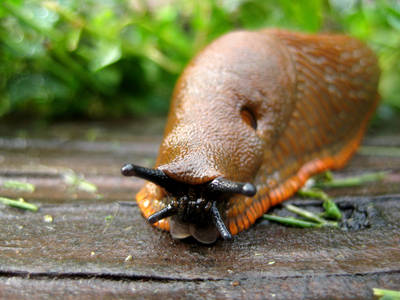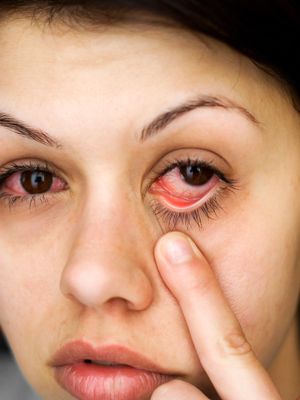The Menace of Metaldehyde

Metaldehyde is a white crystal, organic compound. So far, that sounds quite harmless. The truth of the matter is much more sinister. Metaldehyde is a toxin, used primarily to kill slugs and snails. It is used to protect crops and sold to us as slug pellets.
Metaldehyde was banned by the British Government in 2018, but that ban was overturned by the High Court less than a year after a challenge by Chiltern Farm Chemicals, a company which manufactures slug pellets.
The reason the ban was overturned was not because the chemical is harmless – far from it! No, it was overturned because of “how the decision-making process was conducted”. So why exactly was metaldehyde banned, which products contain it, and what are its effects on animals and on us?
What Is Metaldehyde Used For?
The main use of metaldehyde is as a molluscicide – that’s a poison to molluscs like slugs and snails. It works by making it hard for them to produce the mucus they rely on to move and (more importantly) to stay hydrated. Molluscs that have been exposed to the poison will become less active and will die after a few days through drying out – anybody who has ever sprinkled salt on a slug will know how this terrible death looks.
Because of its properties, metaldehyde is the main ingredient in slug pellets sold to gardeners the world over. It is also used by farmers protecting crops at risk from molluscs, such as cabbage or broccoli. That’s one reason why it’s important to wash your vegetables before you cook them – unless, of course, you only eat organic food.
Less commonly, metaldehyde is used as a solid fuel, typically in lamps or small stoves. It burns without producing smoke, but may release toxic oxides of carbon into the air.
Which Products Contain Metaldehyde?
Metaldehyde is a common ingredient in pesticides so, rather surprisingly, when I conducted an internet search for ‘products containing metaldehyde’ I was presented with many products who found their way into the search results because they DO NOT contain metaldehyde. That’s fabulous news (though frustrating, as I wanted to tell you which products to avoid!).
Suffice to say, if you are buying slug pellets, be sure to read the list of ingredients. If you find metaldehyde on there, I would recommend that you do not use it.
What Other Names Does Metaldehyde Go By?
Manufacturers may refer to some of their ingredients by other names, for example, shampoos may list the ingredient ‘water’ as ‘aqua’. So, what should you look out for in a list of ingredients if you want to avoid buying metaldehyde?
Unfortunately, there are around 70 different names for metaldehyde. Here are just a few to keep an eye out for:
- Metacetaldehyde
- Cekumeta
- Ariotox
- Halizan
- Metason
- Acetaldehyde, tetramer
- Slug-Tox
- Corry's Slug Death
- Acetaldehyde Tetramer
- Slugfest
- Aldehyde (meta)
- HSDB 1735
- tetraoxocanemetacetaldehyde
- 2,4,6,8-tetramethyl-1,3,5,7- tetraoxocane
As you can see, negotiating your way around the ingredients list of a pesticide can be like trying to find a needle in a haystack!
What Do Manufacturers Say About Metaldehyde?
Manufacturers of metaldehyde do recognise that it can be harmful to the environment, but this hasn’t stopped them from making it. Instead, they have begun a campaign called “Get Pelletwise”.
The campaign emphasises that “Slugs are a major pest of agricultural and horticultural crops, and when left unchecked they can cause devastating damage to emerging food and feedstock crops… the total average annual cost to the UK industry from not using pesticides to control slugs, in wheat and oilseed rape (OSR) alone, is £43.5 million per year.”
The campaign does not advise anyone to stop using metaldehyde. Instead it aims to “promote and encourage best practice with metaldehyde slug pellets, amongst agricultural users, to minimise environmental impacts and help preserve the future of metaldehyde as a tool for slug control”.
What Effect Does Metaldehyde Have On The Environment?
It is well known that metaldehyde is harmful, not just to slugs and snails, but to other creatures too. In birds it can cause hyperactivity, tremors, muscle spasms, diarrhoea, and difficulty breathing. Mammals are at risk too and it is known to harm cats and dogs, as well as the humble hedgehogs who feed on poisoned slugs as easy prey. After eating a dying slug, a hedgehog can become weak or infertile.
Metaldehyde would not be as harmful if it weren’t for us humans. You see, it breaks down quite quickly and becomes part of the soil within a few days. That’s why it is made into pellets – so that it lasts longer and so causes more damage. It is soluble in water and any that gets into our water courses should not be a problem – except that a recent study found it in one-eighth of our reservoirs!
What Effect Does Metaldehyde Have On Humans?
If metaldehyde has entered our drinking water, that begs the question “Will it do us any harm?” The truth is that it can, in sufficient doses. There has been at least one case of a child dying after ingesting metaldehyde, although they did eat 3 grams of it – levels in drinking water are nowhere near this much.
Metaldehyde is an irritant to the eyes and skin. If ingested in high doses it has caused the following symptoms in humans:

- Severe abdominal pain
- Nausea
- Vomiting
- Diarrhoea
- Fever
- Convulsions
- Coma
- Persistent memory loss
- Increased heart rate
- Panting
- Asthma attack
- Depression
- Drowsiness
- High blood pressure
- Incontinence
- Lack of coordination
- Muscle tremors
- Sweating
- Kidney damage
As we are not exposed to metaldehyde in large doses (unless we happen to eat some slug pellets, like the unfortunate child mentioned above) we are unlikely to suffer these effects. However, even a small amount of poison ingested again and again would be a bad thing.
Why Was Metaldehyde Banned?
Metaldehyde slug pellets were banned because of an “unacceptable” risk to birds and mammals. Michael Gove, the Secretary of the Department for the Environment, Farming and Rural Affairs imposed the ban on the advice of the UK Expert Committee on Pesticides and the Health and Safety Executive.
Mr. Gove said at the time, “It is clear that the risks to wildlife are simply too great – and we must all play our part in helping to protect the environment.”
I absolutely agree with him, so why has DEFRA taken no action to reinstate the ban since the High Court overturned it for technical reasons? That is a question only the Government can answer but it does make one wonder how serious they are when it comes to environmental laws.
Help Us Save The Hedgehog
The fact that the ban has not been upheld is a cause for concern. That’s why Education Quizzes has started a petition aimed at banning metaldehyde. It is known to harm hedgehogs, and many other creatures besides and, in our opinion, should not be sold.
Will you help us to save the hedgehog by adding your name to our cause? It’s so easy to do – just follow this link.
By the way, if you want to find out more about hedgehogs, or about our campaign, you might like to read these pages:




